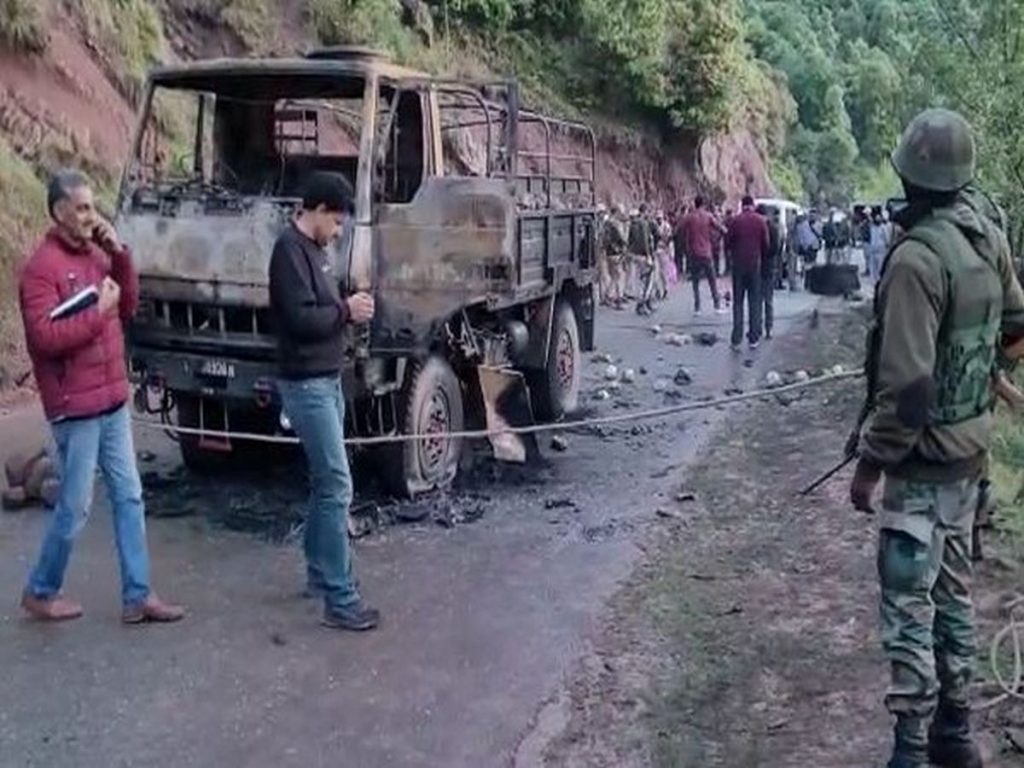
Ultras have killed 10 soldiers in four weeks in Jammu division, where militancy had been non-existent for almost two decades. And the fact that the perpetrators are still at large and their number remains unknown is a huge source of concern, writes Riyaz Wani
At a time when the militancy in Kashmir Valley seems to be on the way out, it is once again rearing its head in Jammu division, where it had been non-existent for almost two decades. The past four weeks have witnessed a steep spike in violence, leading to the killing of ten soldiers by the militants. And the fact that the militants who carried out these killings are still at large and their number remains unknown
makes the future uncertain. It is likely that more violence is in store until the security forces track down the militants. So far, the extensive search in the jungles has yielded no result, but it may in the near future.
The militants who have infiltrated from across the border are believed to be very well-trained. And this was apparent from their April 20 ambush of a security vehicle at Bhata Dhurian area in Rajouri. They are reported to have fired at the security vehicle from all sides and later blown it up with an IED. Subsequently, when the Army launched an operation to flush them out on May 5, they are reported to have used an IED to halt the advance of approaching security personnel, in which five more soldiers were killed on May 6. The militant outfit People’s Anti Fascist Front later released a video accepting responsibility.
The rising militant activity in the Jammu division has become a huge source of concern for the security forces. It has also alarmed the union government. Defence Minister Rajnath Singh visited Army Base
Camp in Rajouri on May 6 to review the operational capabilities and security situation along the border.
Appreciating the valour of Army troops, Singh said, “Keep your spirits up, you will definitely get success.”
He was accompanied by Jammu and Kashmir Lieutenant Governor Manoj Sinha, Army Chief General Manoj Pande, Northern Army Commander Lt Gen Upendra Dwivedi and other senior Army officers.
New hotspots
The very first day of this year began with the violence in Rajouri. Seven civilians, including a child, were killed and six others injured when militants barged into and opened fire in at least three houses of
a minority community in a border village in the district. Although a week later, the Army killed two unidentified militants in the district, the situation couldn’t be brought under control. Successive militancy-related incidents have momentarily shifted attention away from the lingering turmoil in the Kashmir Valley to Jammu which has otherwise been free of militancy over the last two decades – the
sporadic incidents of violence notwithstanding. But the last two years have witnessed some revival of militancy in the twin districts of Rajouri and Poonch.
In August last year, four soldiers and two militants were killed during a fidayeen attack on an Army camp in Rajouri. Poonch and Rajouri districts were also sites of several attacks during summer of 2021 that killed fourteen soldiers, eight militants, including one in custody. The districts were, however, largely calm
through 2022.
Sudden resurgence in violence
In recent weeks, Jammu has once again become a hotspot for militancy, with security personnel being killed and concerns mounting about the number of militants in the area. It is believed that these militants
have infiltrated from across the border, although the exact number is unknown. The dense forests of the region have made it difficult for security forces to find them, and their presence in Jammu has caught
security forces off guard. The situation is made even more concerning by the fact that the forest area where the militants are hiding extends to Shopian in South Kashmir, the district that has been a
hotbed of militancy in recent years. But the militants have chosen to stay in Jammu only, possibly because the region has a lower concentration of security forces than the Valley and also a warmer climate throughout the year.
Last two years have also witnessed a certain thinning of the presence of security forces in Jammu region, which is being exploited by the militants. Two reasons are offered for this state of affairs: one, the ceasefire along the Line of Control between India and Pakistan, which was renewed in early 2021, and has since held. Second, the
consequent redeployment of the Rashtriya Rifles, the main counter-insurgency force in Jammu and Kashmir (J&K), to the Line of Actual Control in Ladakh following China’s incursions along the border. This is believed to have created a void along the border in Jammu, which may have been taken advantage of by militants, resulting in a resurgence of violence in Jammu.
Abating violence in Valley
In the Kashmir Valley, on the other hand, the number of militants has dwindled to less than 100. Ever since the withdrawal of J&K autonomy in August 2019, more than 500 militants have been killed in the
region, most of them local youth. But despite the reduction in the number of militants, violence has persisted. Over the last two years, militants have targeted soft targets, such as civilians, panchayat
workers, J&K police personnel visiting home, outsiders, and minorities. Security forces, as a result, now not only have to combat militancy but also protect a large section of population including many from among their own ranks.
Despite the surge in violence in Jammu, the overall situation in J&K remains relatively stable. Tourism is at an all-time high, with over one crore people visiting J&K last year and the administration now
looking forward to bringing in twice the number this year. Most hotels, according to the region’s tourism department, are booked through the spring. In case, the violence persists in Jammu, it would detract from the semblance of peace in the valley and revive a now largely-pacified theatre of war in the union territory. However, there is a belief that the current violence may not last long, as was seen in the short-lived escalation in Poonch-Rajouri in 2021.
Where do we go from here?
It remains to be seen whether the violence in Jammu intensifies or abates going forward. The pattern over the last two years has been one of a sudden spike followed by an extended absence. For example, in
2021, the militants vanished into thin air soon after successive incidents of violence during July and August. They were believed to have returned to Pakistan from where they had come. On the contrary, the predominant majority of militants in Kashmir have been local. Most of them have been poorly trained and haven’t thus posed much of a challenge to security forces. Meanwhile, a massive search operation called Operation Trinetra has been launched in Jammu to hunt down militants. But so far, the security forces have met with little success. More militant attacks in the area would mean that the militants are in for the long haul and intent on extending separatist campaign to Jammu, something that would substantially expand the sphere of anti-militancy operations in the former state.












